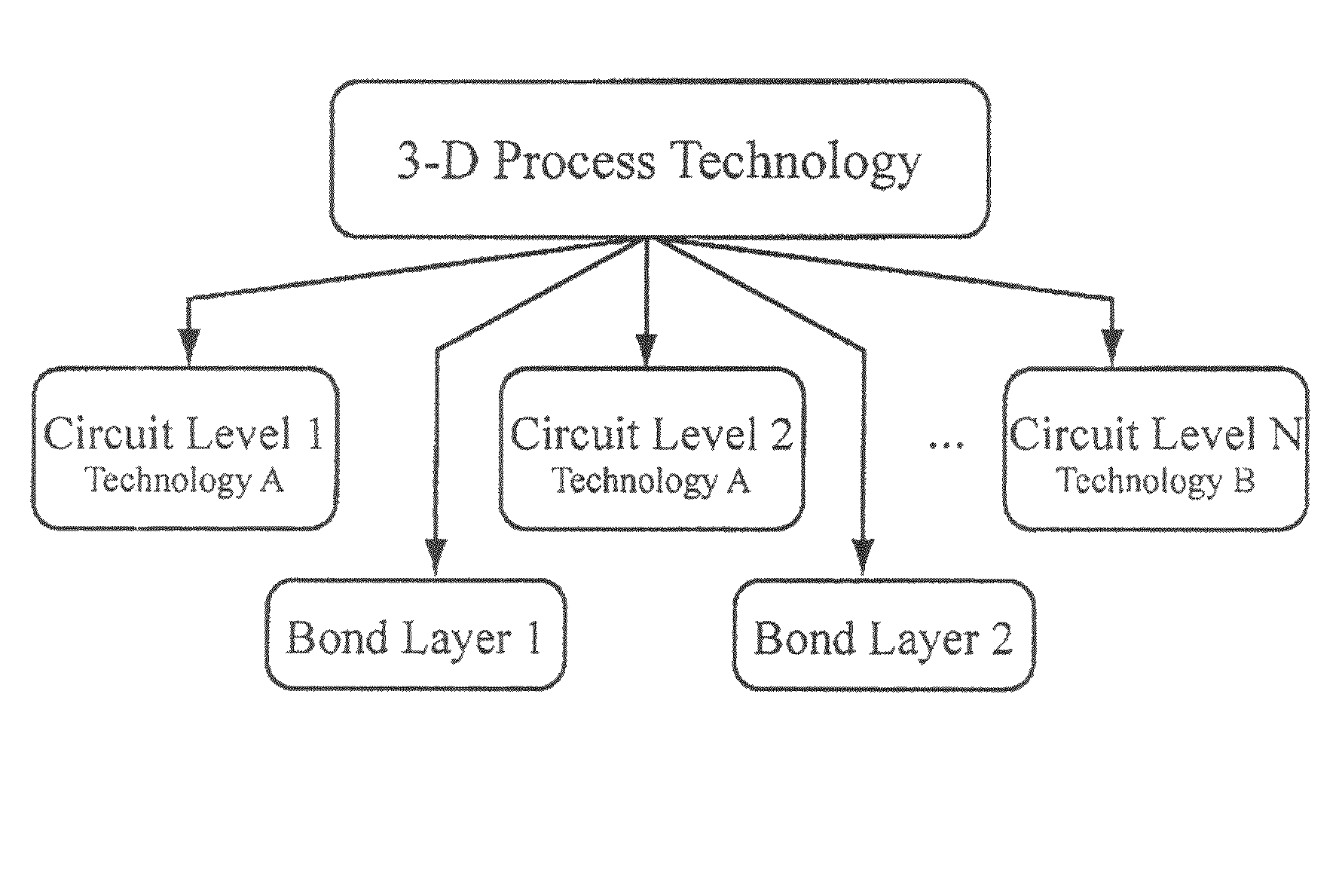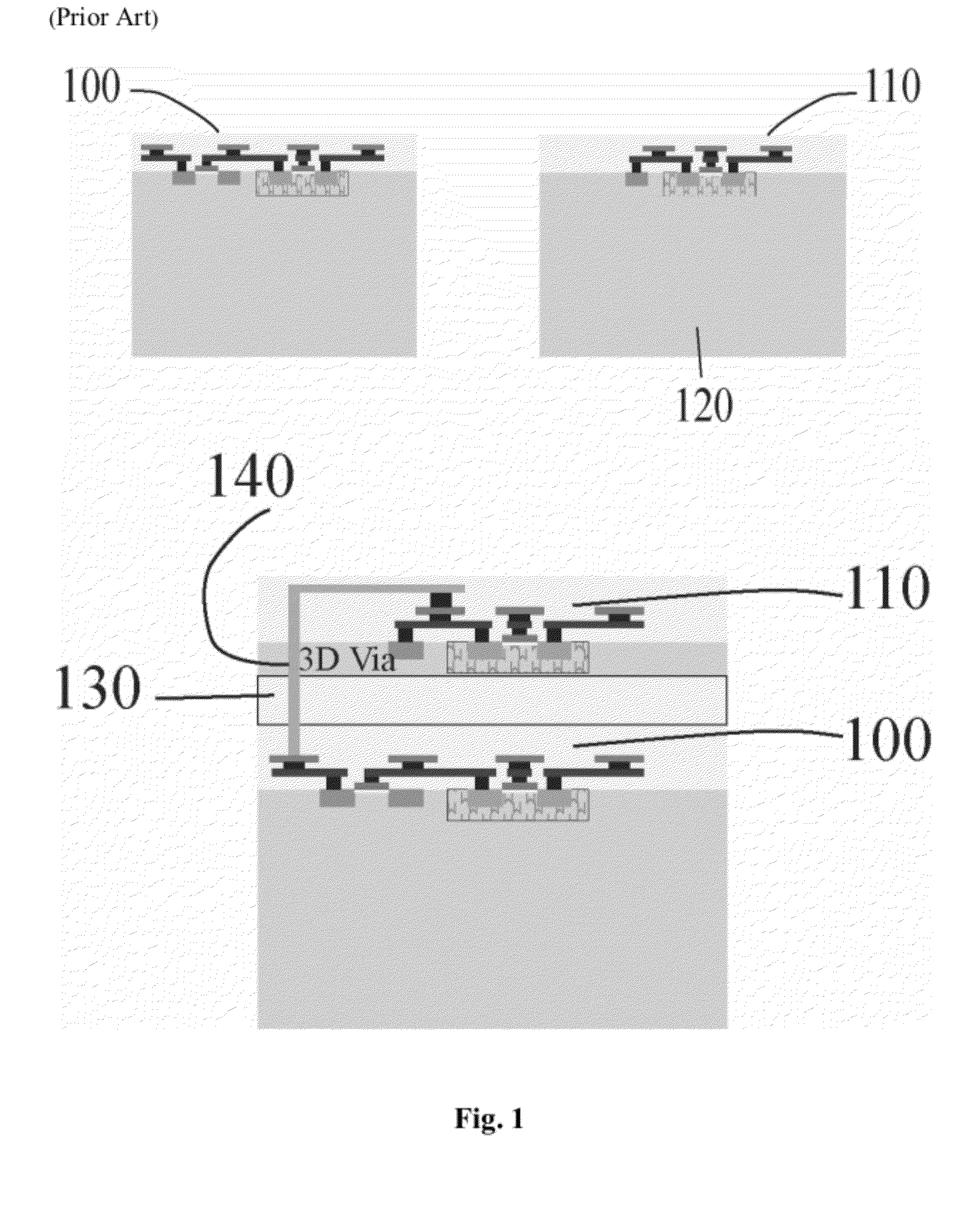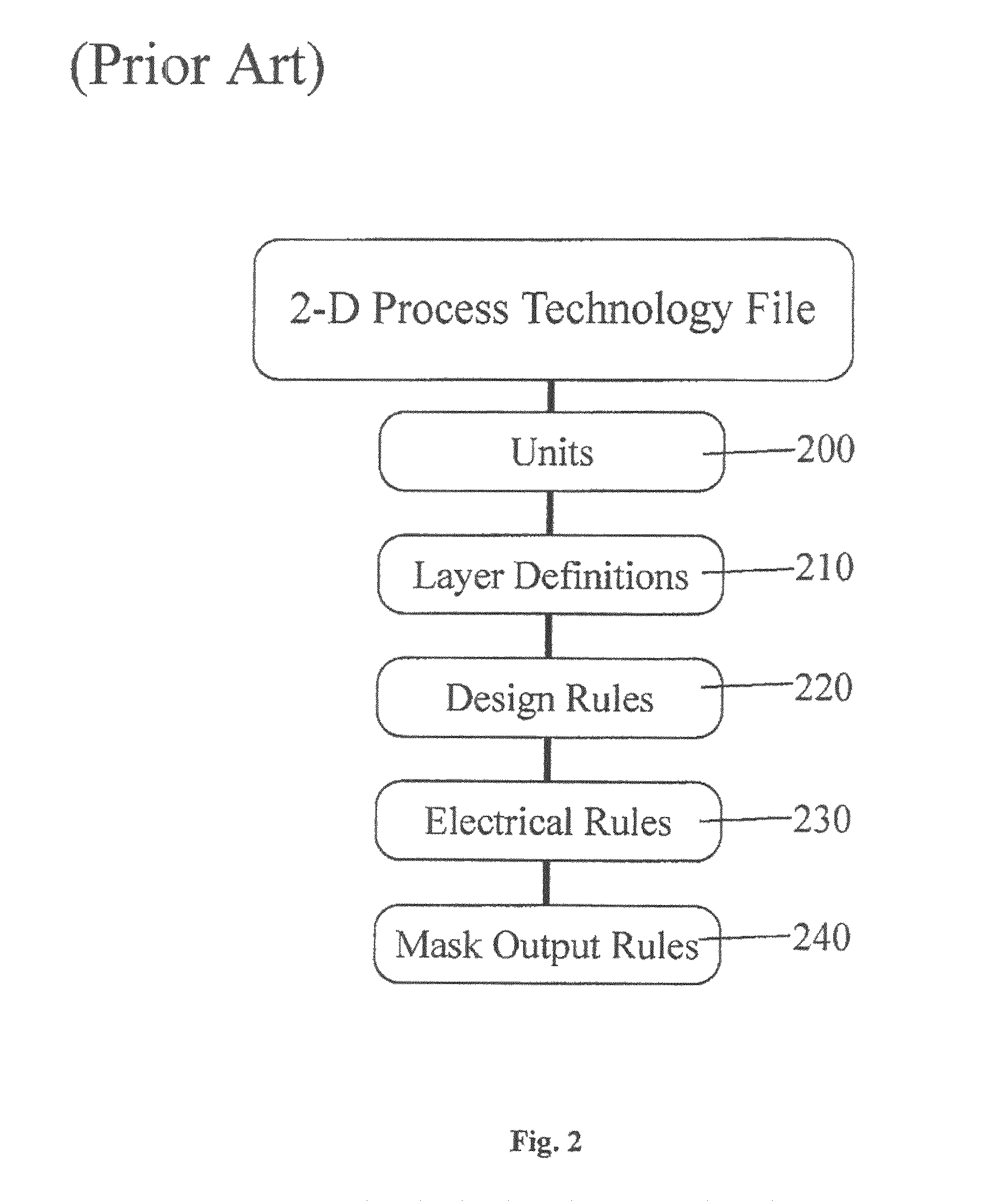Methods and systems for computer aided design of 3D integrated circuits
a computer-aided design and integrated circuit technology, applied in cad circuit design, program control, instruments, etc., can solve the problems of relatively few designers having the opportunity to develop 3-d integrated circuits for fabrication, unable to allow design rule checks or netlist extraction
- Summary
- Abstract
- Description
- Claims
- Application Information
AI Technical Summary
Benefits of technology
Problems solved by technology
Method used
Image
Examples
Embodiment Construction
[0048]Methods and systems for generating and verifying circuit layouts from computer-aided design tools for vertically integrated, three-dimensional integrated circuits are disclosed herein below.
[0049]A three-dimensional, or 3-D, integrated circuit is one comprising multiple levels of semiconductor substrates, each containing active devices therein, in which the different substrates are vertically stacked and electrical interconnections may be made between circuit components on different levels. A significant innovation of emerging 3-D integration technology is that the vertical interconnections may be placed anywhere within the area of any circuit level. This feature provides for a tremendous improvement in device density, but it also adds new constraints for the designer, who should ensure that appropriate design rules are met and that the 3-D physical circuit will function according to the specifications of the logic design.
[0050]The ability to provide arbitrarily placed vertica...
PUM
 Login to View More
Login to View More Abstract
Description
Claims
Application Information
 Login to View More
Login to View More - R&D
- Intellectual Property
- Life Sciences
- Materials
- Tech Scout
- Unparalleled Data Quality
- Higher Quality Content
- 60% Fewer Hallucinations
Browse by: Latest US Patents, China's latest patents, Technical Efficacy Thesaurus, Application Domain, Technology Topic, Popular Technical Reports.
© 2025 PatSnap. All rights reserved.Legal|Privacy policy|Modern Slavery Act Transparency Statement|Sitemap|About US| Contact US: help@patsnap.com



